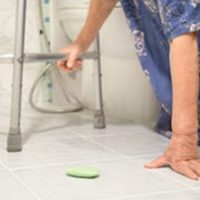Patient Falls in Nursing Homes: How Do They Happen?

Much has been made and published about the ways that people can get injured in nursing homes. From active abuse to neglect, our most vulnerable population is often the group that suffers the most when nursing homes are understaffed, or poorly trained.
But there is another danger in nursing homes—falls. And before you think that falls inside of nursing homes are the same as outside, there are some differences to them.
Inside a Home is Different
Outside of a nursing home, in regular life, you are likely to fall if there is something that causes you to fall—say, a liquid or an object blocking your pathway. B
But when a nursing home patient or resident falls, there is often no danger that is actually on the floor—rather, the danger was created by the nursing home allowing someone elderly or who is unstable, to be walking out and about in the first place.
In many cases, the entire reason why a nursing home patient is in the nursing home in the first place is because it is unsafe for the patient to live with him or herself; family often fears that the relative will fall at home. This makes it all the more devastating when a nursing home with presumably staff and failsafe measures, fails to keep a resident from getting injured by a fall.
Why Do Residents Fall?
Nursing home patients fall for a number of reasons, but one of the biggest contributors is related to neglect.
Many patients may need help or may call for assistance from nursing home staff. When those calls are ignored, like many of us would understandably do, the resident just tries to do it themselves—ti go to the bathroom, or to walk down the hallway to see someone, or to get up to get a drink.
Making the situation worse, many residents are unfamiliar with the layout of the hallways and corridors of the nursing home, and may end up roaming into areas where patients are not supposed to be—areas with obstacles or items that are obstructing walkways.
What Can be Done?
After a fall, most nursing homes are supposed to have a meeting to analyze the conditions that lead to the fall—whether it was an item, or neglect, or something that just “attracted” the resident, making him or her want to walk about. These are sometimes called post fall huddles.
When residents fall inside nursing homes or assisted living facilities, staff will often claim there was nothing that they could do. But in fact, nursing homes have an obligation to look after residents, and to keep them from trying to do things (like walk about freely) that they are not capable of safely doing.
Nursing homes that feel that residents should have limitations on movement, can and should confer with family, so that relatives agree with any decision to restrict a resident’s ability to walk about the home.
Do you have a loved one that was injured in a nursing home? Call the Knoxville personal injury attorneys at Fox Farley Willis & Burnette, PLLC, today for help with your personal injury case.
Sources:
theexpertinstitute.com/anatomy-fall-nurses-perspective/?utm_source=email&utm_medium=email&utm_content=blog-anatomy-of-a-fall&utm_campaign=8.22.17-mini-2
alimed.com/top-5-reasons-for-nursing-home-falls.html
